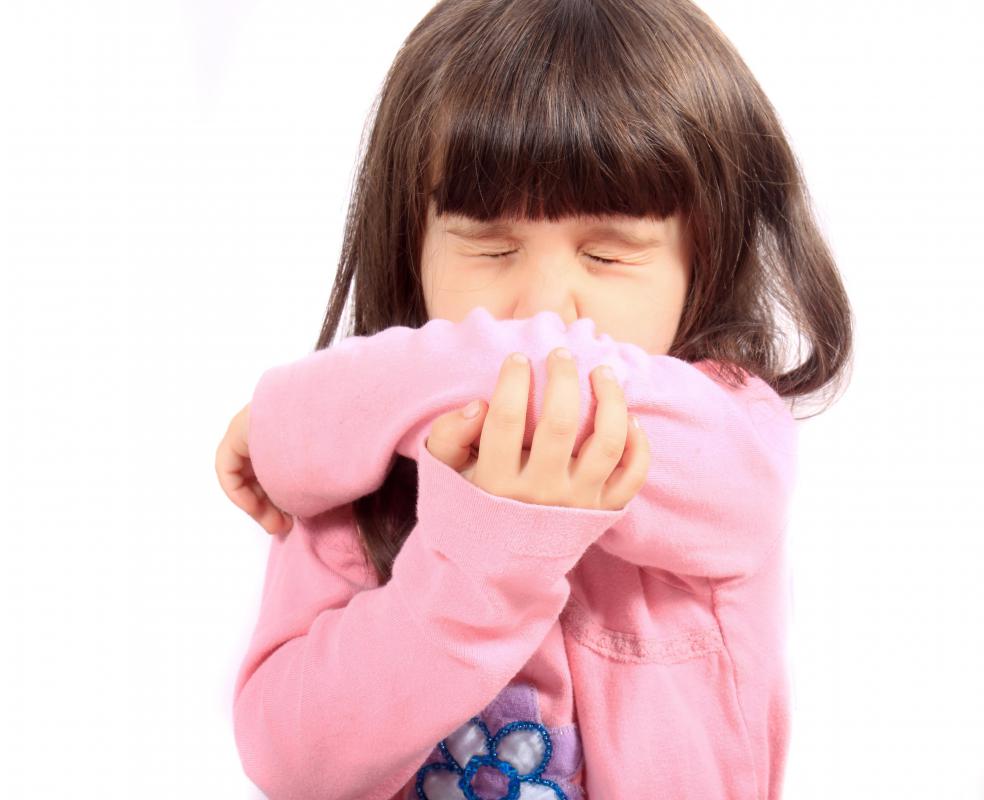At WiseGEEK, we're committed to delivering accurate, trustworthy information. Our expert-authored content is rigorously fact-checked and sourced from credible authorities. Discover how we uphold the highest standards in providing you with reliable knowledge.
What Factors Affect the Spread of Swine Flu?
Swine flu is very similar to the regular, common flu in regards to how it is spread. The spread of swine flu is primarily through close human-to-human contact, although it can occasionally be spread from a live, infected animal to a human being. Most commonly, the spread of swine flu is caused by cross contamination between humans by means of contact with mucus and germ-ridden surfaces.
Generally, swine flu is spread from person to person similarly to how the regular flu is spread. When an infected person coughs or sneezes, a fine spray of mucus or saliva is released into the air. The most common way for an individual to contract swine flu is through close contact with someone who is already infected, especially if the infected person sneezes or coughs in close proximity to that individual. Germs released by coughing and sneezing can be inhaled and absorbed into the mucus membranes that line the nose or mouth, potentially causing an infection.

Another way mucus-borne germs can affect the spread of swine flu is through shared contact of common surfaces. For example, if a person who is sick with swine flu sneezes into his or her hand, and then touches a light switch before washing his or her hands, swine flu germs may linger on that light switch. This means that the next person to touch the light switch might pick up some of those germs, which can be absorbed into the body by contact with the nose, eyes, or mouth.

Fortunately, there are ways to stave off the spread of swine flu. All individuals, sick or healthy, should take great care to wash their hands frequently with warm water and antibacterial soap; doing so can stop sick people from spreading germs to shared surfaces, and can prevent healthy people from touching their noses and mouths with germ-ridden fingers. Similarly, common surfaces such as light switches, doorknobs, and faucets should be routinely disinfected to prevent the spread of swine flu.

In rare cases, the spread of swine flu can occur between a human and an infected swine. Obviously, if an individual’s contact with such animals is limited this is a very marginal risk. People who have pet pigs, or work on farms or in veterinary offices, however, should be aware of the possible, if slight, risk. Consuming pork and pork products does not contribute to the spread of swine flu, as the illness is only communicated through living beings.
AS FEATURED ON:
AS FEATURED ON:















Discussion Comments
@donasmrs-- Of course you can protect yourself. Like the article said, wash your hands often and make sure that your home and office is nicely ventilated. It's difficult for the virus to hang out in the air for long if there is good ventilation and fresh air coming it.
Washing hands often, avoiding sharing utensils or cups with others are also great ways to prevent infection. If you have to be in close proximity with people, such as on the metro, I also think that it's a good idea to wear a medical paper mask. It's not necessary under normal circumstances but if there is an outbreak and lots of people are coming down with it, a mask is very useful.
@fify-- How do we protect ourselves then? You make it sound as though it's inevitable to get swine flu if there is an outbreak. Can't the necessary precautions prevent being infected?
Actually, one doesn't necessarily have to be in close proximity to someone who sneezes and coughs. If someone was recently in a room and coughed and sneezed in it, the virus can remain trapped in moisture particles in the air for a few hours. That's why swine flu spread so quickly in 2010. Lots of people had it despite people generally being careful and avoiding being around sick people.
Post your comments